
openai-forward
🚀 大语言模型高效转发服务 · An efficient forwarding service designed for LLMs. · OpenAI API Reverse Proxy
Stars: 899
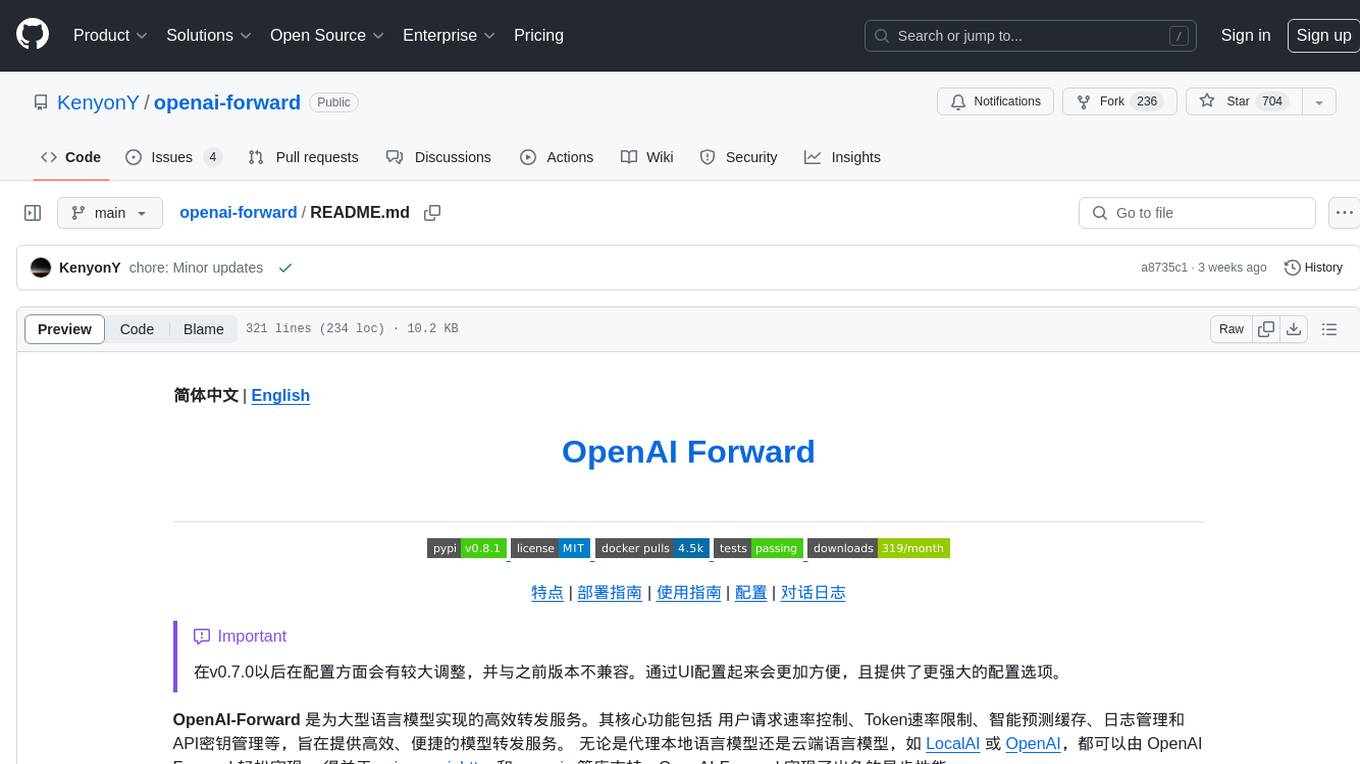
OpenAI-Forward is an efficient forwarding service implemented for large language models. Its core features include user request rate control, token rate limiting, intelligent prediction caching, log management, and API key management, aiming to provide efficient and convenient model forwarding services. Whether proxying local language models or cloud-based language models like LocalAI or OpenAI, OpenAI-Forward makes it easy. Thanks to support from libraries like uvicorn, aiohttp, and asyncio, OpenAI-Forward achieves excellent asynchronous performance.
README:
简体中文 | English
[!IMPORTANT]
在v0.7.0以后在配置方面会有较大调整,并与之前版本不兼容。通过UI配置起来会更加方便,且提供了更强大的配置选项。
OpenAI-Forward 是为大型语言模型实现的高效转发服务。其核心功能包括 用户请求速率控制、Token速率限制、智能预测缓存、日志管理和API密钥管理等,旨在提供高效、便捷的模型转发服务。 无论是代理本地语言模型还是云端语言模型,如 LocalAI 或 OpenAI,都可以由 OpenAI Forward 轻松实现。 得益于 uvicorn, aiohttp, 和 asyncio 等库支持,OpenAI-Forward 实现了出色的异步性能。
- 🎉🎉🎉 v0.7.0版本后支持通过WebUI进行配置管理
- gpt-1106版本已适配
- 缓存后端切换为高性能数据库后端:🗲 FlaxKV
- 全能转发:可转发几乎所有类型的请求
- 性能优先:出色的异步性能
- 缓存AI预测:对AI预测进行缓存,加速服务访问并节省费用
- 用户流量控制:自定义请求速率与Token速率
- 实时响应日志:提升LLMs可观察性
- 自定义秘钥:替代原始API密钥
- 多目标路由:转发多个服务地址至同一服务下的不同路由
- 黑白名单:可对指定IP进行黑白名单限制
- 自动重试:确保服务的稳定性,请求失败时将自动重试
- 快速部署:支持通过pip和docker在本地或云端进行快速部署
由本项目搭建的代理服务地址:
-
原始OpenAI 服务地址
https://api.openai-forward.com
https://render.openai-forward.com -
开启缓存的服务地址(用户请求结果将被保存一段时间)
👉 部署文档
安装
pip install openai-forward
# 或安装webui版本:
pip install openai-forward[webui]启动服务
aifd run
# 或启动带webui的服务
aifd run --webui如果读入了根路径的.env的配置, 将会看到以下启动信息
❯ aifd run
╭────── 🤗 openai-forward is ready to serve! ───────╮
│ │
│ base url https://api.openai.com │
│ route prefix / │
│ api keys False │
│ forward keys False │
│ cache_backend MEMORY │
╰────────────────────────────────────────────────────╯
╭──────────── ⏱️ Rate Limit configuration ───────────╮
│ │
│ backend memory │
│ strategy moving-window │
│ global rate limit 100/minute (req) │
│ /v1/chat/completions 100/2minutes (req) │
│ /v1/completions 60/minute;600/hour (req) │
│ /v1/chat/completions 60/second (token) │
│ /v1/completions 60/second (token) │
╰────────────────────────────────────────────────────╯
INFO: Started server process [191471]
INFO: Waiting for application startup.
INFO: Application startup complete.
INFO: Uvicorn running on http://0.0.0.0:8000 (Press CTRL+C to quit)aifd run的默认选项便是代理https://api.openai.com
下面以搭建好的服务地址https://api.openai-forward.com 为例
Python
from openai import OpenAI # pip install openai>=1.0.0
client = OpenAI(
+ base_url="https://api.openai-forward.com/v1",
api_key="sk-******"
)-
适用场景: 与 LocalAI, api-for-open-llm等项目一起使用
-
如何操作: 以LocalAI为例,如果已在 http://localhost:8080 部署了LocalAI服务,仅需在环境变量或 .env 文件中设置
FORWARD_CONFIG=[{"base_url":"http://localhost:8080","route":"/localai","type":"openai"}]。 然后即可通过访问 http://localhost:8000/localai 使用LocalAI。
(更多)
配置环境变量或 .env 文件如下:
FORWARD_CONFIG=[{"base_url":"https://generativelanguage.googleapis.com","route":"/gemini","type":"general"}]说明:aidf run启动后,即可通过访问 http://localhost:8000/gemini 使用gemini pro。
-
场景1: 使用通用转发,可对任意来源服务进行转发, 可获得请求速率控制与token速率控制;但通用转发不支持自定义秘钥.
-
场景2: 可通过 LiteLLM 可以将 众多云模型的 API 格式转换为 openai 的api格式,然后使用openai风格转发
(更多)
执行 aifd run --webui 进入配置页面 (默认服务地址 http://localhost:8001)
你可以在项目的运行目录下创建 .env 文件来定制各项配置。参考配置可见根目录下的 .env.example文件
开启缓存后,将会对指定路由的内容进行缓存,其中转发类型分别为openai与general两者行为略有不同,
使用general转发时,默认会将相同的请求一律使用缓存返回,
使用openai转发时,在开启缓存后,可以通过OpenAI 的extra_body参数来控制缓存的行为,如
Python
from openai import OpenAI
client = OpenAI(
+ base_url="https://smart.openai-forward.com/v1",
api_key="sk-******"
)
completion = client.chat.completions.create(
model="gpt-3.5-turbo",
messages=[
{"role": "user", "content": "Hello!"}
],
+ extra_body={"caching": True}
)Curl
curl https://smart.openai.com/v1/chat/completions \
-H "Content-Type: application/json" \
-H "Authorization: Bearer sk-******" \
-d '{
"model": "gpt-3.5-turbo",
"messages": [{"role": "user", "content": "Hello!"}],
"caching": true
}'
Click for more details
见.env文件
用例:
import openai
+ openai.api_base = "https://api.openai-forward.com/v1"
- openai.api_key = "sk-******"
+ openai.api_key = "fk-******"支持转发不同地址的服务至同一端口的不同路由下
用例见 .env.example
Click for more details
保存路径在当前目录下的Log/openai/chat/chat.log路径中。
记录格式为
{'messages': [{'role': 'user', 'content': 'hi'}], 'model': 'gpt-3.5-turbo', 'stream': True, 'max_tokens': None, 'n': 1, 'temperature': 1, 'top_p': 1, 'logit_bias': None, 'frequency_penalty': 0, 'presence_penalty': 0, 'stop': None, 'user': None, 'ip': '127.0.0.1', 'uid': '2155fe1580e6aed626aa1ad74c1ce54e', 'datetime': '2023-10-17 15:27:12'}
{'assistant': 'Hello! How can I assist you today?', 'is_tool_calls': False, 'uid': '2155fe1580e6aed626aa1ad74c1ce54e'}
转换为json格式:
aifd convert得到chat_openai.json:
[
{
"datetime": "2023-10-17 15:27:12",
"ip": "127.0.0.1",
"model": "gpt-3.5-turbo",
"temperature": 1,
"messages": [
{
"user": "hi"
}
],
"tools": null,
"is_tool_calls": false,
"assistant": "Hello! How can I assist you today?"
}
]欢迎通过提交拉取请求或在仓库中提出问题来为此项目做出贡献。
OpenAI-Forward 采用 MIT 许可证。
For Tasks:
Click tags to check more tools for each tasksFor Jobs:
Alternative AI tools for openai-forward
Similar Open Source Tools

openai-forward
OpenAI-Forward is an efficient forwarding service implemented for large language models. Its core features include user request rate control, token rate limiting, intelligent prediction caching, log management, and API key management, aiming to provide efficient and convenient model forwarding services. Whether proxying local language models or cloud-based language models like LocalAI or OpenAI, OpenAI-Forward makes it easy. Thanks to support from libraries like uvicorn, aiohttp, and asyncio, OpenAI-Forward achieves excellent asynchronous performance.
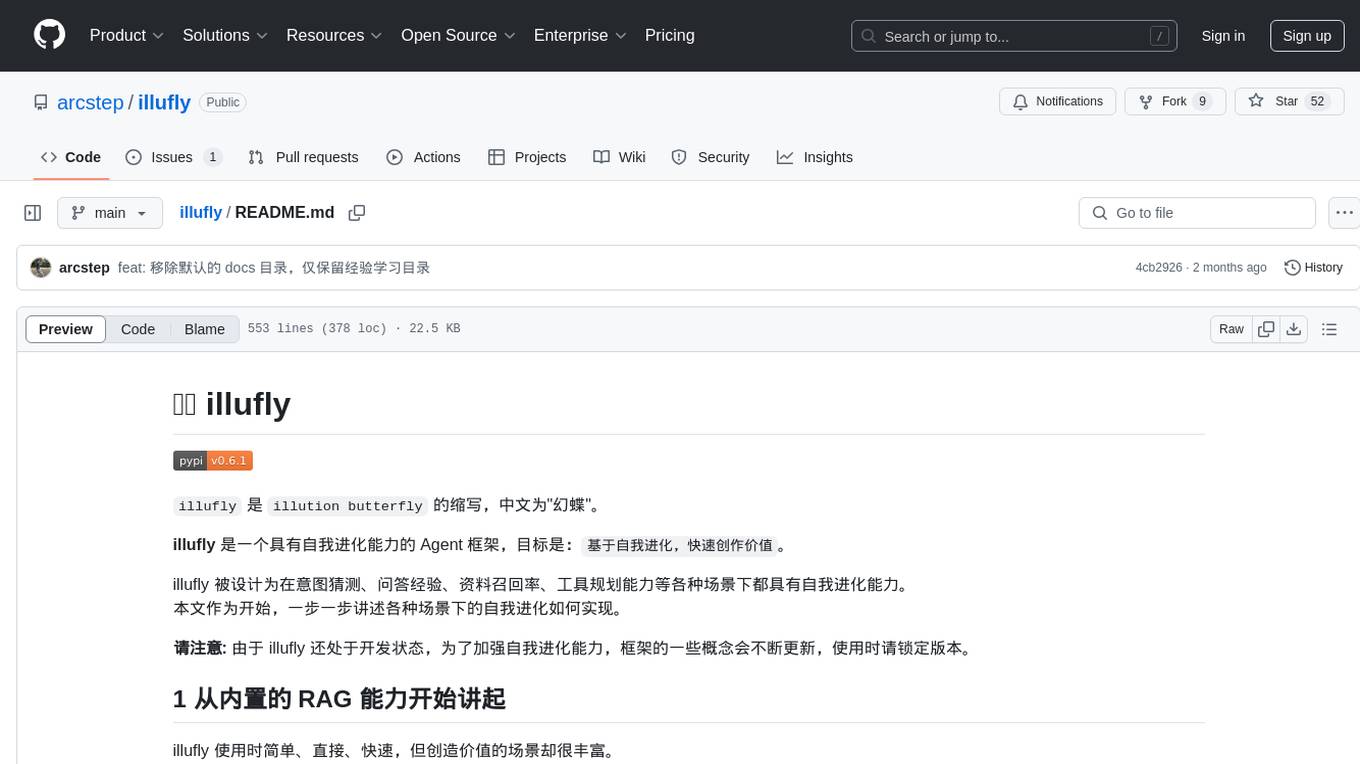
illufly
illufly is an Agent framework with self-evolution capabilities, aiming to quickly create value based on self-evolution. It is designed to have self-evolution capabilities in various scenarios such as intent guessing, Q&A experience, data recall rate, and tool planning ability. The framework supports continuous dialogue, built-in RAG support, and self-evolution during conversations. It also provides tools for managing experience data and supports multiple agents collaboration.
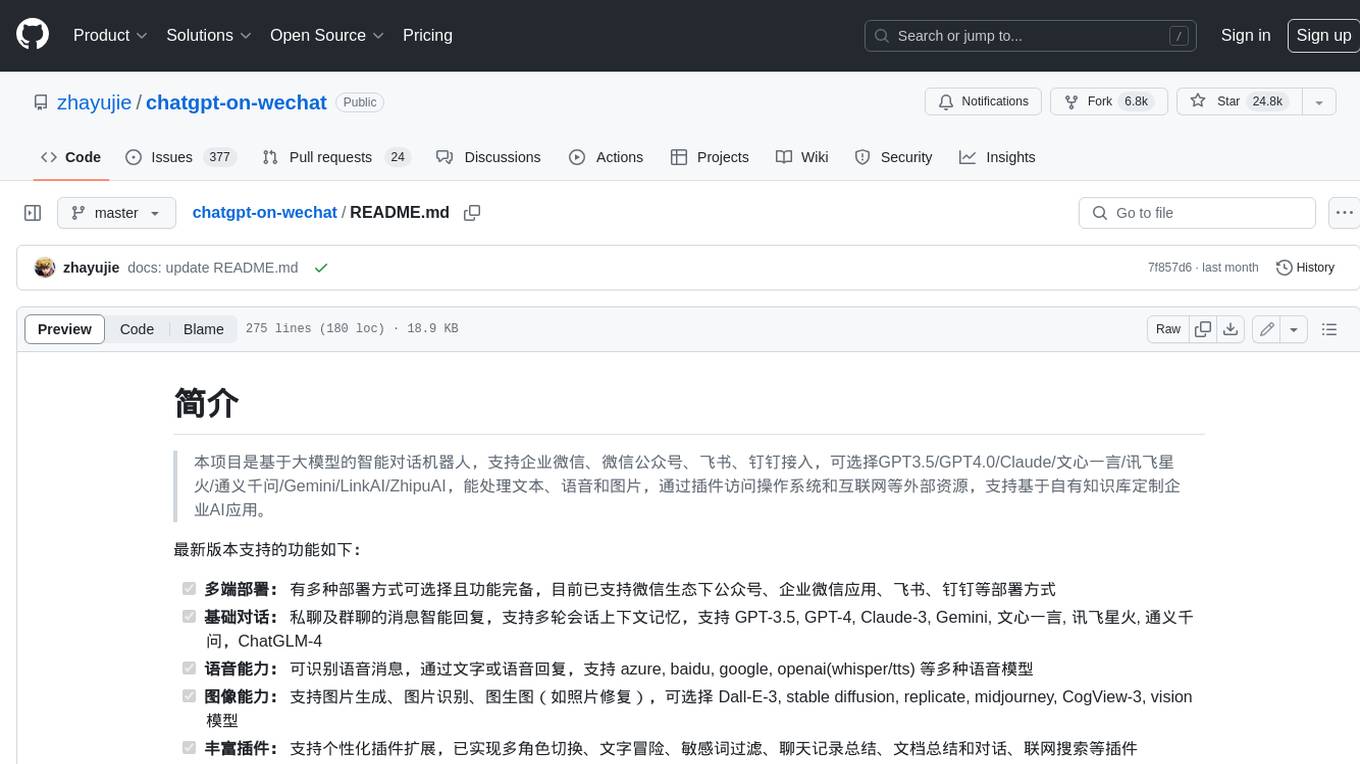
chatgpt-on-wechat
This project is a smart chatbot based on a large model, supporting WeChat, WeChat Official Account, Feishu, and DingTalk access. You can choose from GPT3.5/GPT4.0/Claude/Wenxin Yanyi/Xunfei Xinghuo/Tongyi Qianwen/Gemini/LinkAI/ZhipuAI, which can process text, voice, and images, and access external resources such as operating systems and the Internet through plugins, supporting the development of enterprise AI applications based on proprietary knowledge bases.

Streamer-Sales
Streamer-Sales is a large model for live streamers that can explain products based on their characteristics and inspire users to make purchases. It is designed to enhance sales efficiency and user experience, whether for online live sales or offline store promotions. The model can deeply understand product features and create tailored explanations in vivid and precise language, sparking user's desire to purchase. It aims to revolutionize the shopping experience by providing detailed and unique product descriptions to engage users effectively.
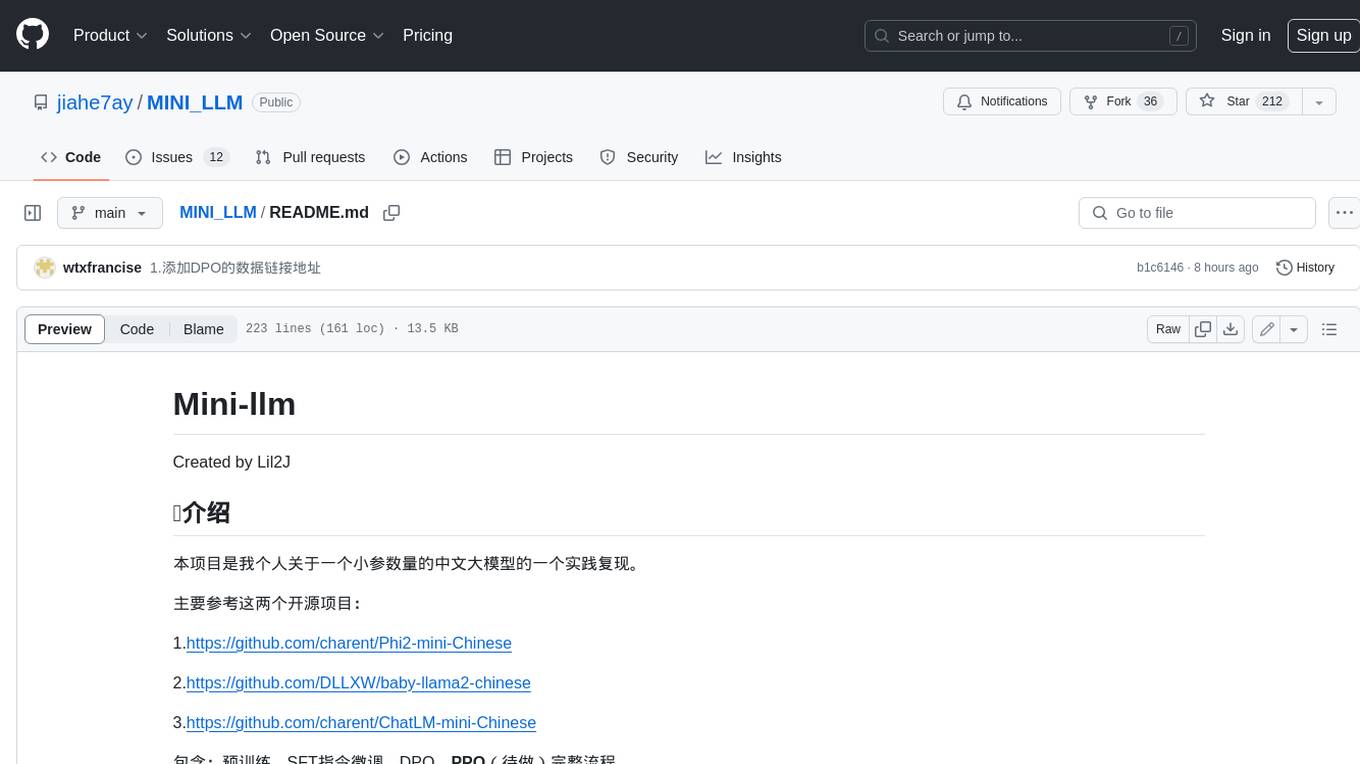
MINI_LLM
This project is a personal implementation and reproduction of a small-parameter Chinese LLM. It mainly refers to these two open source projects: https://github.com/charent/Phi2-mini-Chinese and https://github.com/DLLXW/baby-llama2-chinese. It includes the complete process of pre-training, SFT instruction fine-tuning, DPO, and PPO (to be done). I hope to share it with everyone and hope that everyone can work together to improve it!
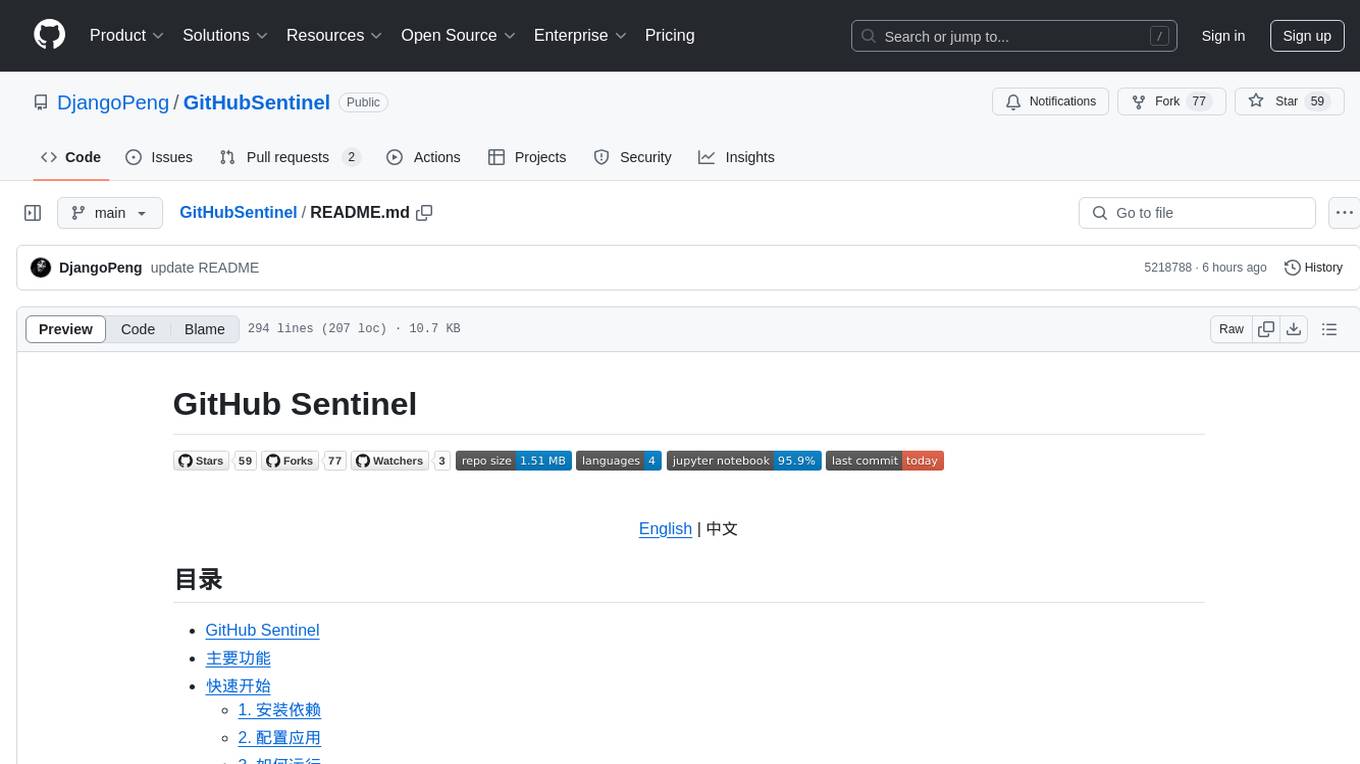
GitHubSentinel
GitHub Sentinel is an intelligent information retrieval and high-value content mining AI Agent designed for the era of large models (LLMs). It is aimed at users who need frequent and large-scale information retrieval, especially open source enthusiasts, individual developers, and investors. The main features include subscription management, update retrieval, notification system, report generation, multi-model support, scheduled tasks, graphical interface, containerization, continuous integration, and the ability to track and analyze the latest dynamics of GitHub open source projects and expand to other information channels like Hacker News for comprehensive information mining and analysis capabilities.
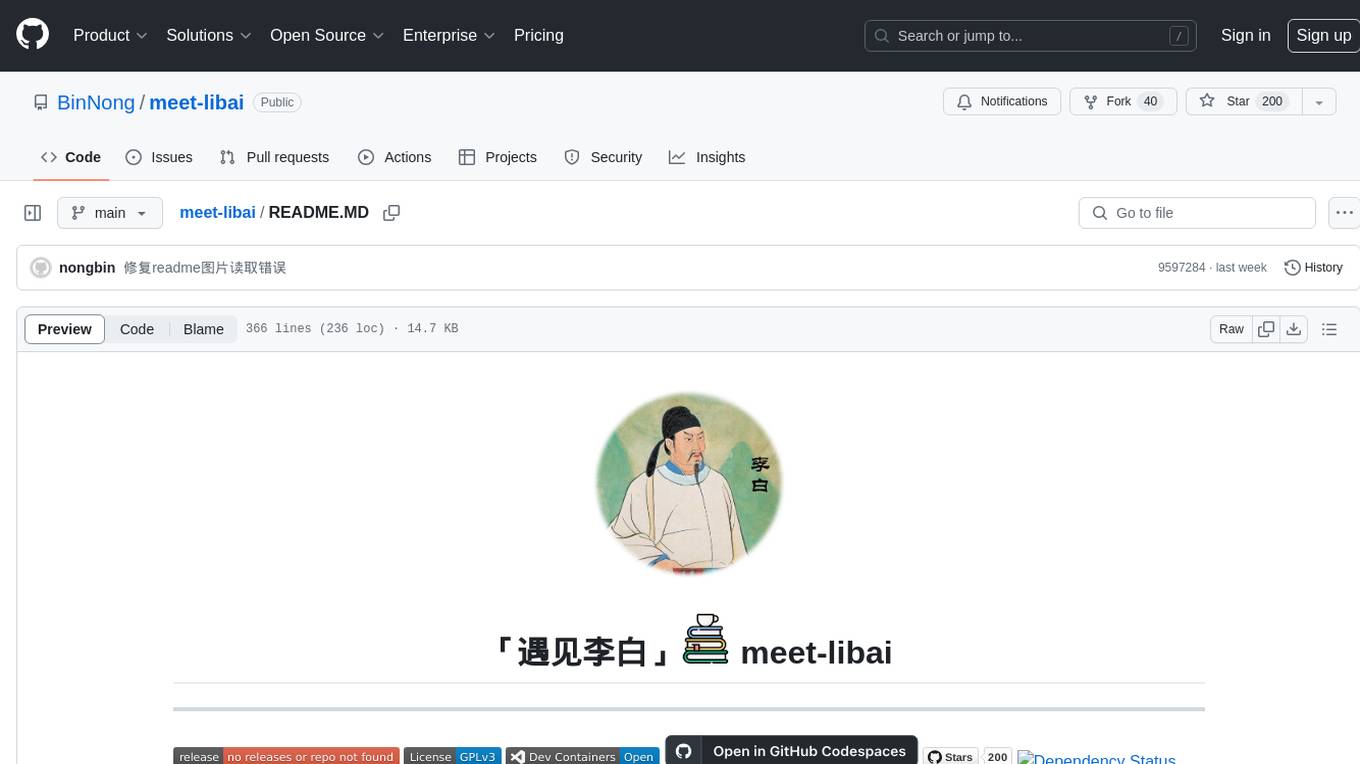
meet-libai
The 'meet-libai' project aims to promote and popularize the cultural heritage of the Chinese poet Li Bai by constructing a knowledge graph of Li Bai and training a professional AI intelligent body using large models. The project includes features such as data preprocessing, knowledge graph construction, question-answering system development, and visualization exploration of the graph structure. It also provides code implementations for large models and RAG retrieval enhancement.
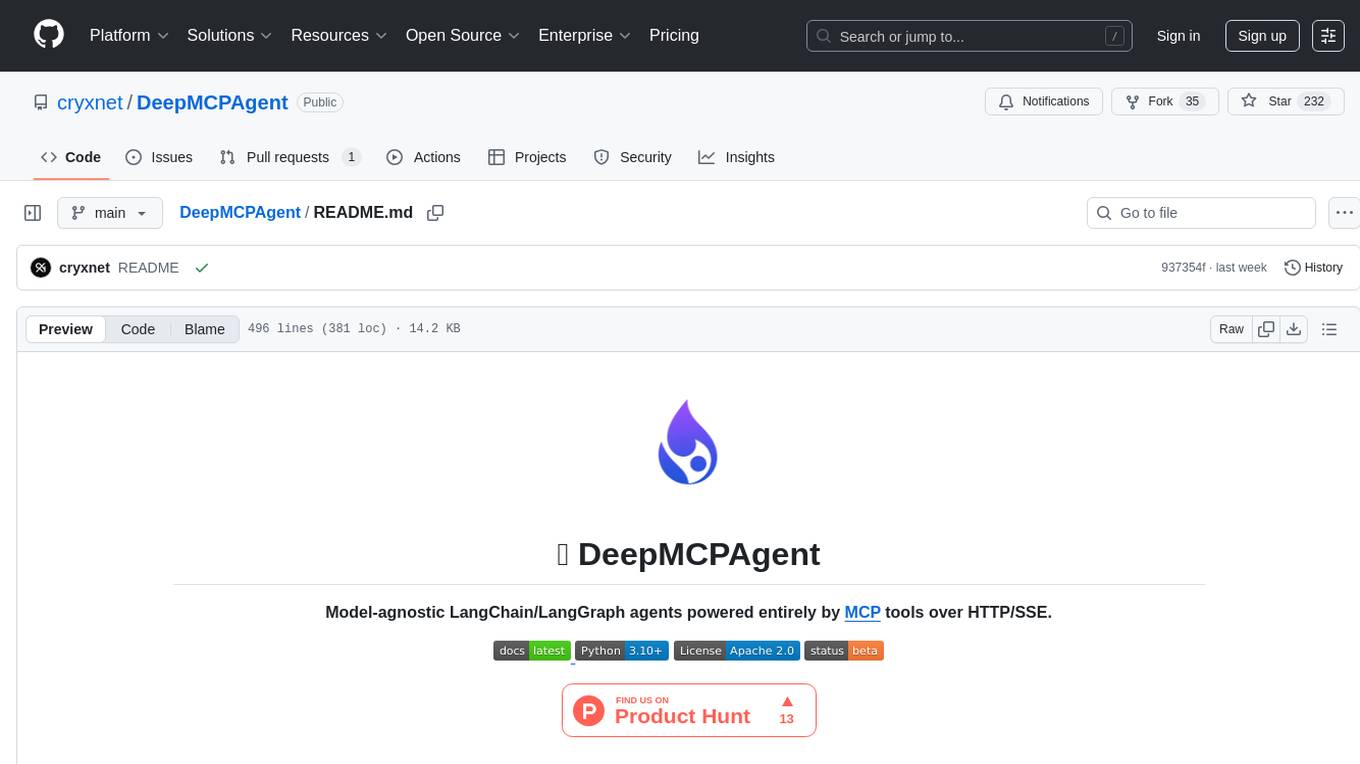
DeepMCPAgent
DeepMCPAgent is a model-agnostic tool that enables the creation of LangChain/LangGraph agents powered by MCP tools over HTTP/SSE. It allows for dynamic discovery of tools, connection to remote MCP servers, and integration with any LangChain chat model instance. The tool provides a deep agent loop for enhanced functionality and supports typed tool arguments for validated calls. DeepMCPAgent emphasizes the importance of MCP-first approach, where agents dynamically discover and call tools rather than hardcoding them.
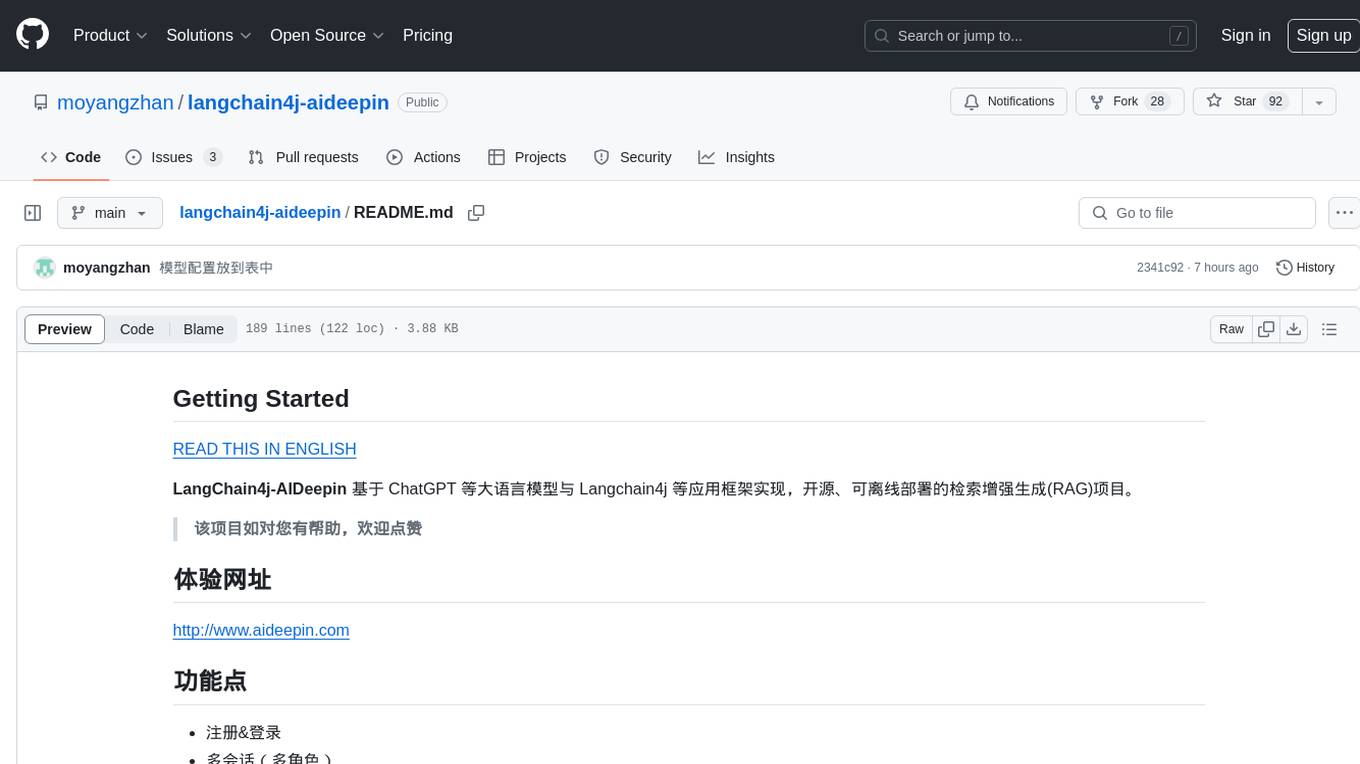
langchain4j-aideepin
LangChain4j-AIDeepin is an open-source, offline deployable retrieval enhancement generation (RAG) project based on large language models such as ChatGPT and Langchain4j application framework. It offers features like registration & login, multi-session support, image generation, prompt words, quota control, knowledge base, model-based search, model switching, and search engine switching. The project integrates models like ChatGPT 3.5, Tongyi Qianwen, Wenxin Yiyuan, Ollama, and DALL-E 2. The backend uses technologies like JDK 17, Spring Boot 3.0.5, Langchain4j, and PostgreSQL with pgvector extension, while the frontend is built with Vue3, TypeScript, and PNPM.
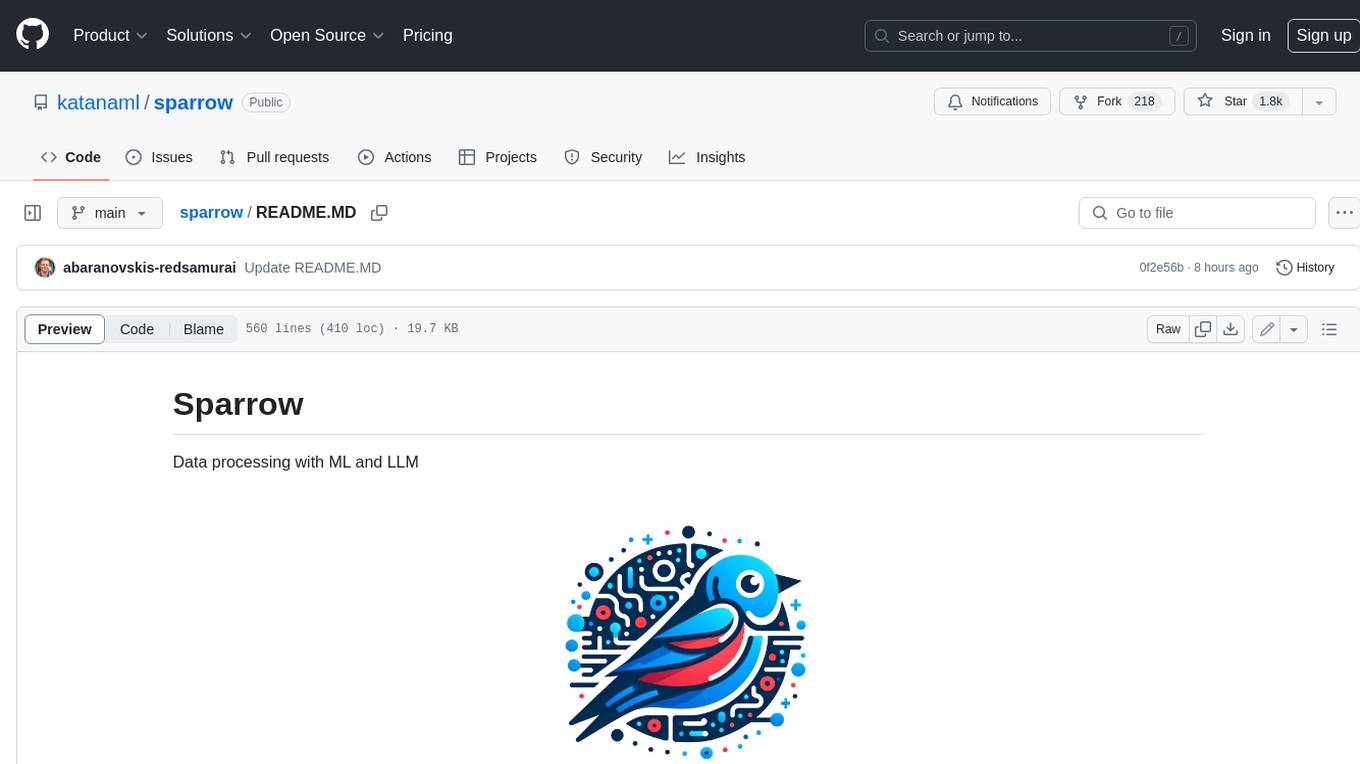
sparrow
Sparrow is an innovative open-source solution for efficient data extraction and processing from various documents and images. It seamlessly handles forms, invoices, receipts, and other unstructured data sources. Sparrow stands out with its modular architecture, offering independent services and pipelines all optimized for robust performance. One of the critical functionalities of Sparrow - pluggable architecture. You can easily integrate and run data extraction pipelines using tools and frameworks like LlamaIndex, Haystack, or Unstructured. Sparrow enables local LLM data extraction pipelines through Ollama or Apple MLX. With Sparrow solution you get API, which helps to process and transform your data into structured output, ready to be integrated with custom workflows. Sparrow Agents - with Sparrow you can build independent LLM agents, and use API to invoke them from your system. **List of available agents:** * **llamaindex** - RAG pipeline with LlamaIndex for PDF processing * **vllamaindex** - RAG pipeline with LLamaIndex multimodal for image processing * **vprocessor** - RAG pipeline with OCR and LlamaIndex for image processing * **haystack** - RAG pipeline with Haystack for PDF processing * **fcall** - Function call pipeline * **unstructured-light** - RAG pipeline with Unstructured and LangChain, supports PDF and image processing * **unstructured** - RAG pipeline with Weaviate vector DB query, Unstructured and LangChain, supports PDF and image processing * **instructor** - RAG pipeline with Unstructured and Instructor libraries, supports PDF and image processing. Works great for JSON response generation
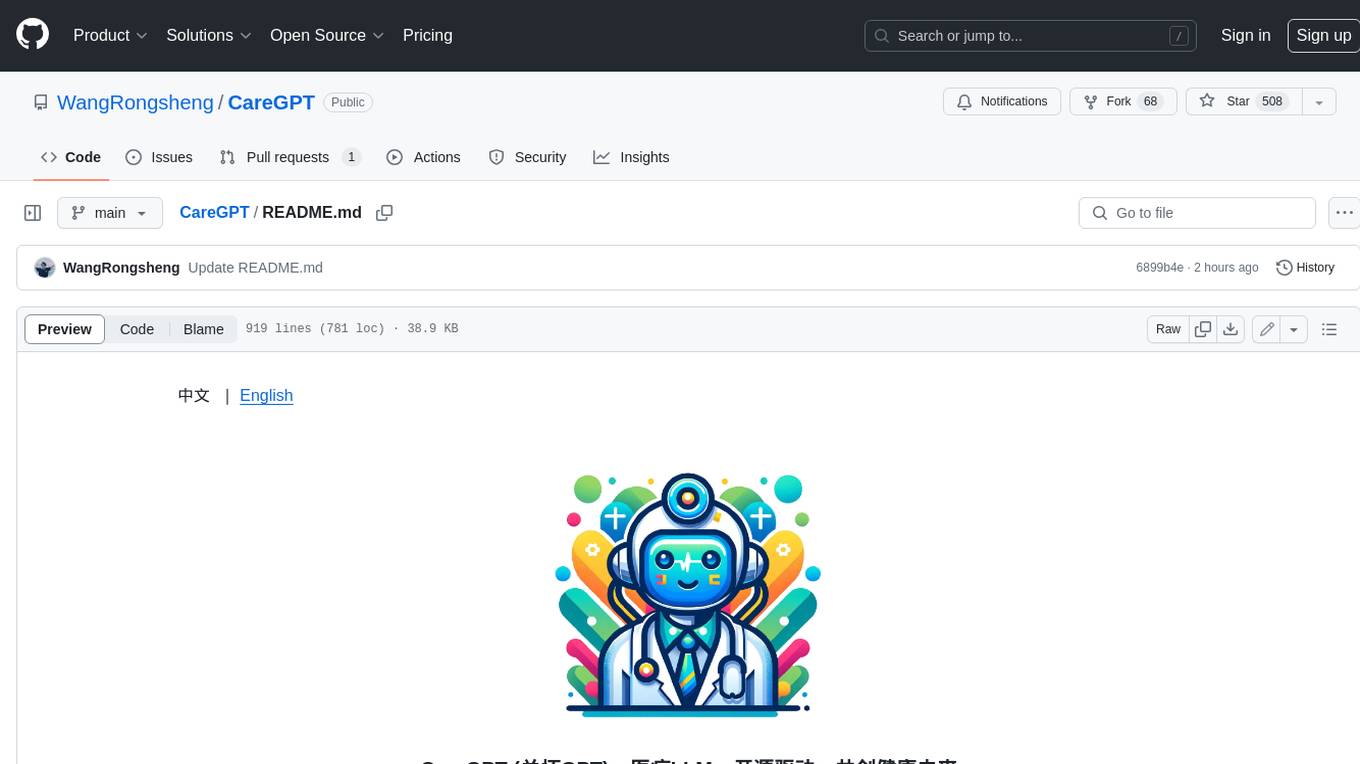
CareGPT
CareGPT is a medical large language model (LLM) that explores medical data, training, and deployment related research work. It integrates resources, open-source models, rich data, and efficient deployment methods. It supports various medical tasks, including patient diagnosis, medical dialogue, and medical knowledge integration. The model has been fine-tuned on diverse medical datasets to enhance its performance in the healthcare domain.
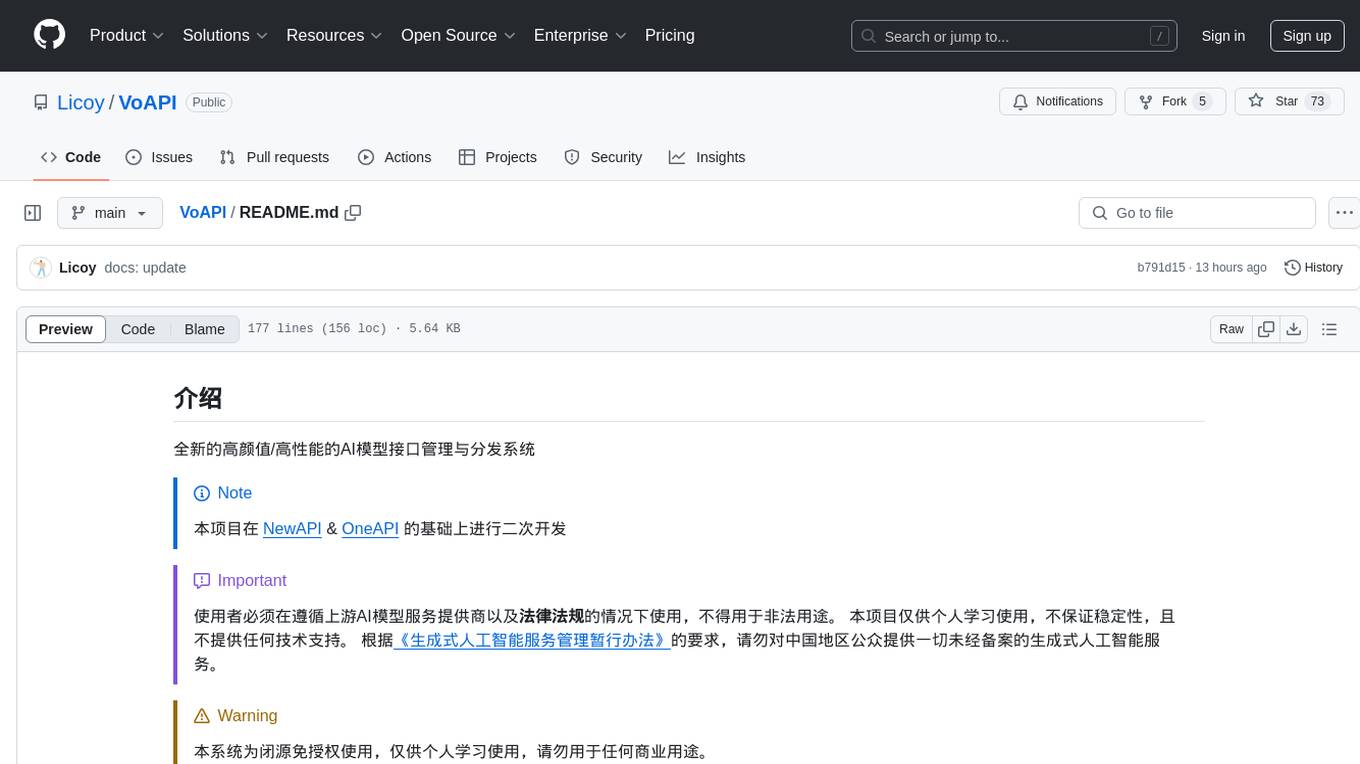
VoAPI
VoAPI is a new high-value/high-performance AI model interface management and distribution system. It is a closed-source tool for personal learning use only, not for commercial purposes. Users must comply with upstream AI model service providers and legal regulations. The system offers a visually appealing interface, independent development documentation page support, service monitoring page configuration support, and third-party login support. It also optimizes interface elements, user registration time support, data operation button positioning, and more.
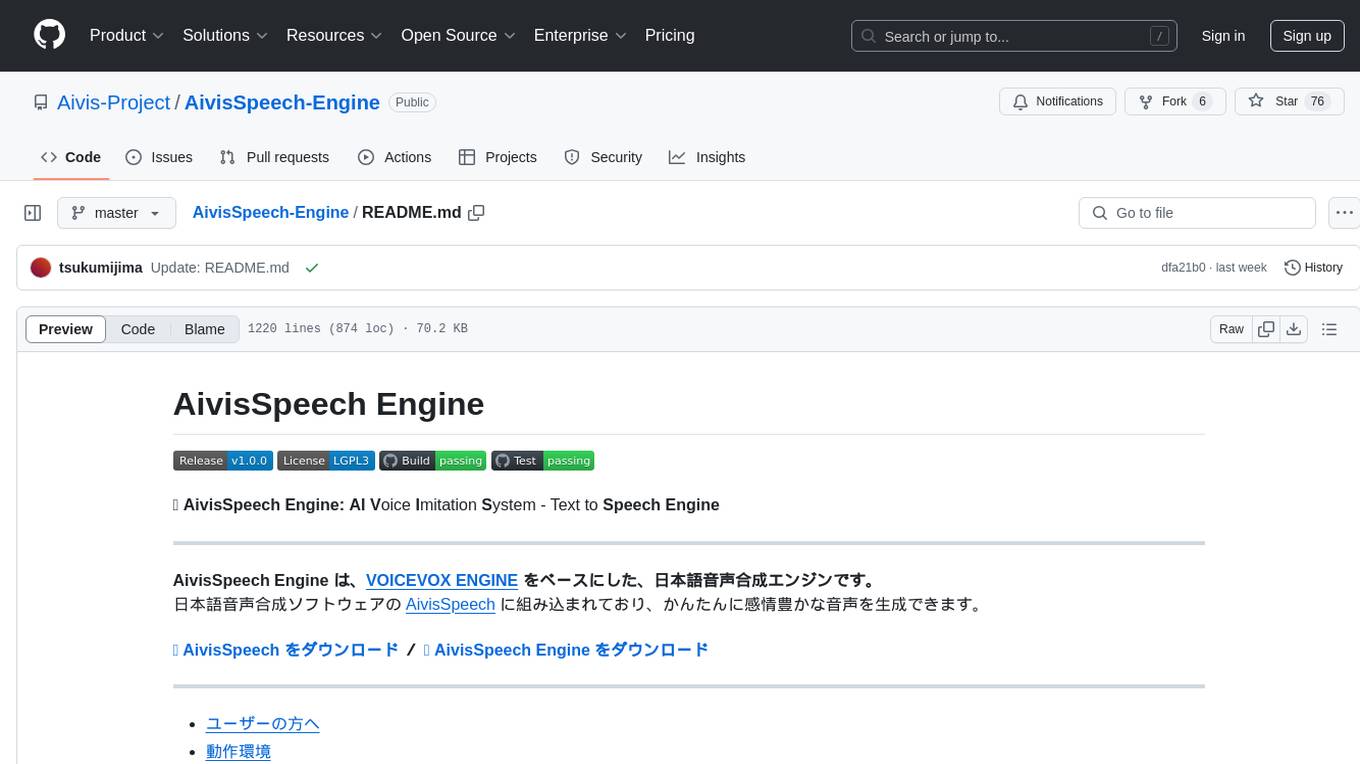
AivisSpeech-Engine
AivisSpeech-Engine is a powerful open-source tool for speech recognition and synthesis. It provides state-of-the-art algorithms for converting speech to text and text to speech. The tool is designed to be user-friendly and customizable, allowing developers to easily integrate speech capabilities into their applications. With AivisSpeech-Engine, users can transcribe audio recordings, create voice-controlled interfaces, and generate natural-sounding speech output. Whether you are building a virtual assistant, developing a speech-to-text application, or experimenting with voice technology, AivisSpeech-Engine offers a comprehensive solution for all your speech processing needs.
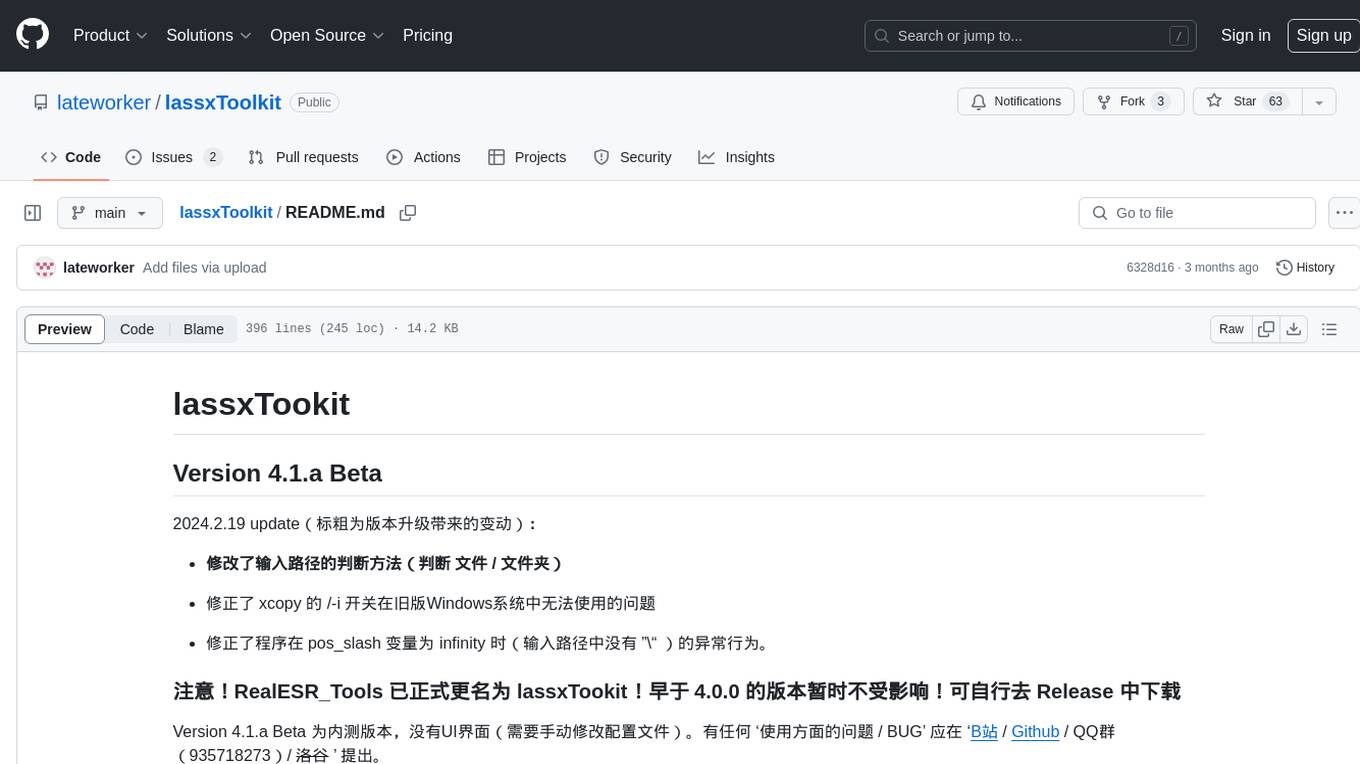
lassxToolkit
lassxToolkit is a versatile tool designed for file processing tasks. It allows users to manipulate files and folders based on specified configurations in a strict .json format. The tool supports various AI models for tasks such as image upscaling and denoising. Users can customize settings like input/output paths, error handling, file selection, and plugin integration. lassxToolkit provides detailed instructions on configuration options, default values, and model selection. It also offers features like tree restoration, recursive processing, and regex-based file filtering. The tool is suitable for users looking to automate file processing tasks with AI capabilities.

GalTransl
GalTransl is an automated translation tool for Galgames that combines minor innovations in several basic functions with deep utilization of GPT prompt engineering. It is used to create embedded translation patches. The core of GalTransl is a set of automated translation scripts that solve most known issues when using ChatGPT for Galgame translation and improve overall translation quality. It also integrates with other projects to streamline the patch creation process, reducing the learning curve to some extent. Interested users can more easily build machine-translated patches of a certain quality through this project and may try to efficiently build higher-quality localization patches based on this framework.

resume-design
Resume-design is an open-source and free resume design and template download website, built with Vue3 + TypeScript + Vite + Element-plus + pinia. It provides two design tools for creating beautiful resumes and a complete backend management system. The project has released two frontend versions and will integrate with a backend system in the future. Users can learn frontend by downloading the released versions or learn design tools by pulling the latest frontend code.
For similar tasks

openai-forward
OpenAI-Forward is an efficient forwarding service implemented for large language models. Its core features include user request rate control, token rate limiting, intelligent prediction caching, log management, and API key management, aiming to provide efficient and convenient model forwarding services. Whether proxying local language models or cloud-based language models like LocalAI or OpenAI, OpenAI-Forward makes it easy. Thanks to support from libraries like uvicorn, aiohttp, and asyncio, OpenAI-Forward achieves excellent asynchronous performance.
For similar jobs

weave
Weave is a toolkit for developing Generative AI applications, built by Weights & Biases. With Weave, you can log and debug language model inputs, outputs, and traces; build rigorous, apples-to-apples evaluations for language model use cases; and organize all the information generated across the LLM workflow, from experimentation to evaluations to production. Weave aims to bring rigor, best-practices, and composability to the inherently experimental process of developing Generative AI software, without introducing cognitive overhead.

LLMStack
LLMStack is a no-code platform for building generative AI agents, workflows, and chatbots. It allows users to connect their own data, internal tools, and GPT-powered models without any coding experience. LLMStack can be deployed to the cloud or on-premise and can be accessed via HTTP API or triggered from Slack or Discord.

VisionCraft
The VisionCraft API is a free API for using over 100 different AI models. From images to sound.

kaito
Kaito is an operator that automates the AI/ML inference model deployment in a Kubernetes cluster. It manages large model files using container images, avoids tuning deployment parameters to fit GPU hardware by providing preset configurations, auto-provisions GPU nodes based on model requirements, and hosts large model images in the public Microsoft Container Registry (MCR) if the license allows. Using Kaito, the workflow of onboarding large AI inference models in Kubernetes is largely simplified.

PyRIT
PyRIT is an open access automation framework designed to empower security professionals and ML engineers to red team foundation models and their applications. It automates AI Red Teaming tasks to allow operators to focus on more complicated and time-consuming tasks and can also identify security harms such as misuse (e.g., malware generation, jailbreaking), and privacy harms (e.g., identity theft). The goal is to allow researchers to have a baseline of how well their model and entire inference pipeline is doing against different harm categories and to be able to compare that baseline to future iterations of their model. This allows them to have empirical data on how well their model is doing today, and detect any degradation of performance based on future improvements.

tabby
Tabby is a self-hosted AI coding assistant, offering an open-source and on-premises alternative to GitHub Copilot. It boasts several key features: * Self-contained, with no need for a DBMS or cloud service. * OpenAPI interface, easy to integrate with existing infrastructure (e.g Cloud IDE). * Supports consumer-grade GPUs.

spear
SPEAR (Simulator for Photorealistic Embodied AI Research) is a powerful tool for training embodied agents. It features 300 unique virtual indoor environments with 2,566 unique rooms and 17,234 unique objects that can be manipulated individually. Each environment is designed by a professional artist and features detailed geometry, photorealistic materials, and a unique floor plan and object layout. SPEAR is implemented as Unreal Engine assets and provides an OpenAI Gym interface for interacting with the environments via Python.

Magick
Magick is a groundbreaking visual AIDE (Artificial Intelligence Development Environment) for no-code data pipelines and multimodal agents. Magick can connect to other services and comes with nodes and templates well-suited for intelligent agents, chatbots, complex reasoning systems and realistic characters.





